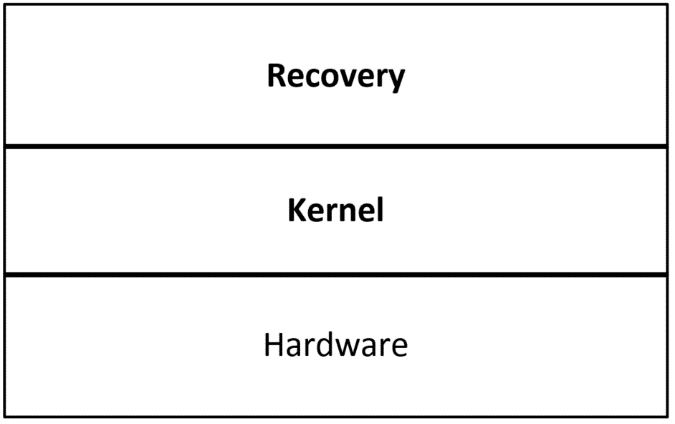As we know, Android uses the Linux kernel. Linux was developed by Linus Torvalds in 1991. The current Linux kernel is maintained by the Linux Kernel Organization Inc. The latest mainline kernel releases can be found at https://www.kernel.org.
Android uses a slightly customized Linux kernel. The following is a concise list of the changes to the Linux kernel:
- ashmem (Android Shared Memory): A file-based shared memory system to user space
- Binder: An interprocess communication (IPC) and remote procedure call (RPC) system
- logger: A high-speed in-kernel logging mechanism optimized for writes
- paranoid networking: A mechanism to restrict network I/O to certain processes
- pmem (physical memory): A driver for mapping large chunks of physical memory into user space
- Viking Killer: A replacement OOM killer that implements Android's "kill least recently used process" logic under low-memory conditions
- wakelocks: Android's unique power management solution, in which the default state of the device is sleep and explicit action is required (via a wakelock) to prevent that
Most of the changes were implemented as device drivers with little or no changes necessary to the core kernel code. The only significant subsystem-spanning change is wakelocks.
There are many Android patches accepted by the mainline Linux kernel today. The mainline kernel can even boot up Android directly. There is a blog from Linaro about how to boot Nexus 7 running a mainline kernel. If you want to try it, you can find the instructions at https://wiki.linaro.org/LMG/Kernel/FormFactorEnablement.
If a Linux device driver is available for a hardware device, it usually can work on Android as well. The development of device drivers is the same as the development of a typical Linux device driver. If you want to find out the merges on the mainline kernel related to Android, you can check the kernel release notes at https://kernelnewbies.org/LinuxVersions.
The Android kernel source code is usually provided by SoC vendors, such as Qualcomm or MTK. The kernel source code for Google devices can be found at https://android.googlesource.com/kernel/.
Google devices use SoC from various vendors so that you can find kernel source code from different vendors here. For example, the kernel source of QualComm SoC is under kernel/msm and the kernel source of Mediatek is under kernel/mediatek. The general Android kernel source code is in the folder kernel/common, which looks much like the Vanilla kernel.
The default build of AOSP is for various devices from Google, such as Nexus or Pixel. It started to include some reference boards from silicon vendors as well recently, such as hikey-linaro, and so on. If you need a vendor-specific Android kernel for your reference platform, you should get the kernel source code from your platform vendors.
There are also open source communities maintaining Android kernels. For example, the kernel for the ARM architecture can be found at Linaro for many reference boards. For Intel x86 architecture, you can find various versions of kernels in the Android-x86 project. As you can see from the following Linaro Linux Kernel status website, the linaro-android tree is a forward port of the out-of-tree AOSP patches. It provides a preview of what Google's next AOSP kernel/common.git tree "might" look like.




